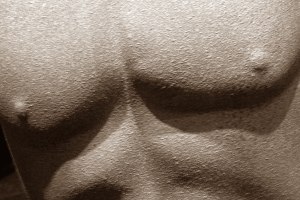We don't listen like we should. It is true of all of us. Especially in this day of so much noise, media and distractions, listening has become almost a lost art.
However, for someone with a yeast infection in their ear, they are risking never being able to hear again.
And, unfortunately, yeast infections in the ear are quite often misdiagnosed, leading on an exhausting journey with trips to multiple doctor offices and several different medications before a cure is finally found.
However, for someone with a yeast infection in their ear, they are risking never being able to hear again.
And, unfortunately, yeast infections in the ear are quite often misdiagnosed, leading on an exhausting journey with trips to multiple doctor offices and several different medications before a cure is finally found.
Swimmer's Ear
Otitis externa or an outer ear infection is often called swimmer's ear. Swimmer's ear is often associated with a bacterial infection, however, in less than 10% of the cases, it is actually a fungus (yeast) and is called otomycosis.
There are two types of yeast infections that commonly present themselves in the outer ear: Candida albicans (which is already found in the body in controlled quantities) and Aspergillus niger.
Swimmer's ear is most often caused when something disrupts the protective lining of the ear.
- Sharp objects stuck in to scratch the ear.
- Cotton swabs that may have jabbed the ear.
- Water left in the ear from swimming.
- Inflammation from allergies or another bacterial infection.
- Chemicals such as hair sprays they may be irritating the ear.
Other risk factors for yeast infections may come into play as well, such as Diabetes or the use of steroids and antibiotics.
Do You Have a Yeast Infection? Here are some Symptoms
It may be difficult to distinguish between a fungal or a bacterial infection in the ear. Both can cause, pain, redness, discharge,scaling and decreased hearing.
The cure that doctor's typically prescribe will generally involved using some acetic acid to help make the environment in the ear unfriendly to any host organisms and generally will work against bacteria and fungi alike.
However, is they choose to use an antibiotic drop, it may not treat the yeast infection at all and, in some cases, can actually make it worse.
However, if they need to differentiate, an ear nose and throat doctor (also called an otolaryngologist) can collect a sample and examine it under a microscope to determine what type of organism is being problematic.
Home Remedies For a Yeast Infection In the Ear
Note: Ear infections of any type are serious. If left untreated, especially in children, they can spread and perforate the ear drum, even spreading into the bones surrounding the ear and requiring the need for surgery. In worst cases, they can lead to hearing loss. If you have chronic pain in your ear schedule a Doctor's appointment. While you are waiting to see the doc, here are some home remedies. And, as always, DO NOT POKE STUFF INTO YOUR EAR.
Garlic is a major antifungal agent, but also can kill many kinds of bacteria as well. Garlic oil can be an excellent drop to try in the ear to kill the yeast. In fact, garlic is so effective at killing yeast, that it cannot be added to rising bread without flattening the loaf.
Tea Tree Oil (Melaleuca alternifolia) is a well-known antifungal agent. I personally have used it to combat foot fungus on two different occasions, and it was one of the main medications I packed when I went on a 6-week trip to Africa.
Genetian Violet can stain purple, but it is an often prescribed medication that is very effective for treating yeast and has been quite often prescribed throughout the years. Even better, it can be inexpensively purchased online from Amazon and used as an at-home treatment.
Just because you can't see yeast, doesn't mean it isn't there. Experiencing a yeast overgrowth in one area of the body, may actually be symptomatic of the yeast overgrowth occuring in your gut. Restoring natural balance to your body is essential for prevent future yeast infections.







